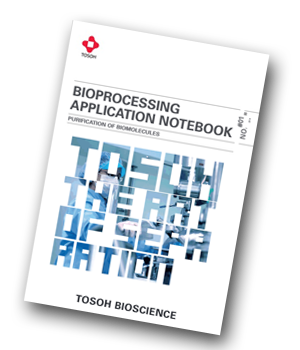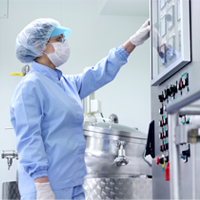Tosoh Bioscience has produced Volume 1 of its 'Bioprocessing Application Notebook' that comprises over twenty application notes covering important aspects of biopharmaceutical purification.
 Why use Bioprocess Chromatography?
Why use Bioprocess Chromatography?
The purification and recovery of a biological target molecule out of a tissue, cell or fermentation broth - the so called downstream processing (DSP) - usually requires a combination of separation technologies. Bioprocess chromatography is the most important technique for this purpose.
Today, biopharmaceuticals are the fastest growing product segment of the pharmaceutical industry. An effective and affordable purification of therapeutic biomolecules is key for the successful development and commercialization of new drugs, no matter whether biologic, biosimilar, or biobetter. With new biopharmaceutical formats, such as bispecific mAbs, antibody fragments and antibody-drug-conjugates (ADCs) in the pipeline, rapid development of DSP steps will become even more important.
What is covered in the 'Bioprocessing Application Notebook'?
 This application notebook covers important aspects of biopharmaceutical purification such as capturing of antibody constructs such as Fab, scFv or mAB, mAb aggregate removal using salt-tolerant IEC or hydroxyapatite, intermediate purification of bi-specific antibodies with a non-affinity platform using MXC and HIC, antibody-drug conjugates (ADC) purification on HIC resin, or separation of oligonucleotides on a highly-selective anion exchanger.
This application notebook covers important aspects of biopharmaceutical purification such as capturing of antibody constructs such as Fab, scFv or mAB, mAb aggregate removal using salt-tolerant IEC or hydroxyapatite, intermediate purification of bi-specific antibodies with a non-affinity platform using MXC and HIC, antibody-drug conjugates (ADC) purification on HIC resin, or separation of oligonucleotides on a highly-selective anion exchanger.




